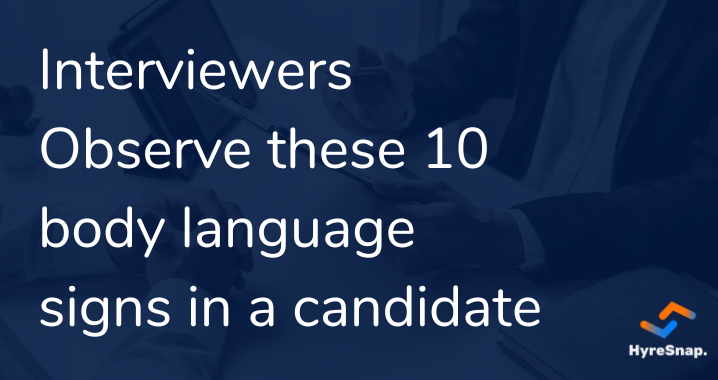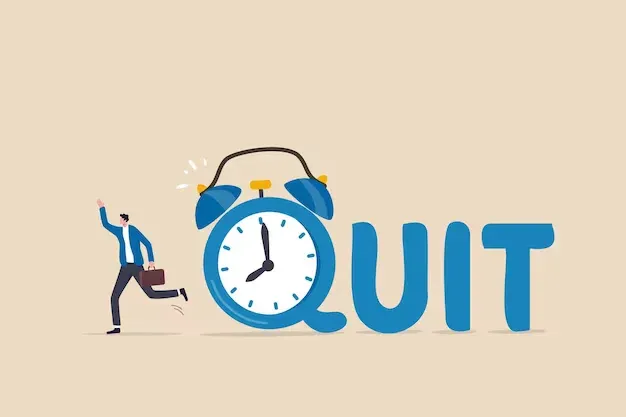10+ Best Practices to conduct Exit Interview
5 min read

Employee departures are a natural part of any organization's life cycle. Whether an employee is moving on to new opportunities or seeking a change, their exit can provide invaluable insights into the inner workings of your company.
The exit interview, a structured conversation between a departing employee and a representative of the organization, is a powerful tool for gathering feedback and understanding the reasons behind an employee's departure.
Here, we will explore over 10 best practices to conduct exit interviews effectively, enabling your organization to learn, grow, and foster a healthier workplace culture.
Post that, you can use HyreSnap Interview as a Service platform to select suitable professionals for your company that can stay for a longer period.
For now, let's delve into the art and science of conducting exit interviews with finesse and purpose.
An exit interview is a structured interview or conversation conducted by an organization with an employee who is leaving the company. The primary purpose of an exit interview is to gain feedback from the departing employee regarding their experiences, reasons for leaving, and suggestions for improvement. These interviews serve several important purposes:
- Feedback Collection: Exit interviews are an opportunity for the organization to gather candid feedback from departing employees. Employees may be more open about their experiences and concerns since they are leaving the company.
- Identifying Trends and Issues: By collecting feedback from multiple exit interviews, organizations can identify common trends and recurring issues that may need attention, such as concerns related to management, workplace culture, or specific policies.
- Improvement of Work Environment: The feedback obtained can be used to make positive changes within the organization, whether that means addressing workplace issues, improving benefits, or enhancing career development opportunities.
- Succession Planning: Exit interviews can provide insights into areas where the organization needs to improve retention strategies or succession planning, particularly if multiple employees mention the same concerns.
- Employee Relations: Conducting exit interviews professionally and respectfully can help maintain a positive relationship with departing employees. It leaves a good final impression, which can be valuable for future potential engagements or referrals.
- Legal Documentation: In some cases, exit interviews can serve as a legal record of the employee's departure and may include discussions related to non-disclosure agreements, non-compete clauses, or other contractual obligations.
Exit interviews are typically conducted by a representative from the human resources department or a designated exit interview specialist. They may be conducted in person, over the phone, or through written surveys or online questionnaires. The information gathered during exit interviews is usually kept confidential, and employees are assured that their feedback will not negatively impact their employment references.
Conducting exit interviews effectively is essential for gaining valuable insights into your organization and for maintaining positive relationships with departing employees.
Here are some best practices to follow when conducting exit interviews:
- Plan in Advance: Schedule the exit interview well in advance, allowing both parties to prepare and ensuring that the conversation is meaningful.
- Choose the Right Interviewer: Select an experienced and empathetic interviewer, often from the HR department, who can guide the conversation and make the employee feel comfortable.
- Assure Confidentiality: Assure the departing employee that their feedback will remain confidential and won't negatively impact their references.
- Use a Structured Questionnaire: Create a standardized set of questions or a questionnaire to ensure consistency in the information collected. Questions should cover various aspects of the employee's experience, from job satisfaction to reasons for leaving.
- Open-Ended Questions: Include open-ended questions that encourage detailed responses. For example, "What factors contributed to your decision to leave?"
- Ask About the Good and the Bad: Encourage the employee to discuss both positive and negative aspects of their experience, including their achievements and areas where they felt the company fell short.
- Listen Actively: Pay close attention to what the employee is saying, and don't interrupt. Give them space to express their thoughts and feelings.
- Don't Debate or Defend: Avoid getting defensive or debating the employee's feedback. Your goal is to understand their perspective, not to change their mind.
- Take Notes: Document the responses during the interview, which can help in analyzing the feedback later and identifying trends.
- Follow Up: After the interview, follow up with the employee, if appropriate, to discuss any actions taken or changes implemented based on their feedback.
- Analyze and Act on Feedback: Regularly review and analyze the feedback collected from exit interviews. Look for patterns or recurring issues and take action to address them.
- Share Results Selectively: While maintaining confidentiality, share aggregated and anonymized feedback with senior management and relevant departments. This can lead to more comprehensive organizational improvements.
- Use Technology: Consider using software or online survey tools to streamline the exit interview process and collect data efficiently.
- Treat Departing Employees Respectfully: Ensure that the exit interview is a respectful and professional conversation. Leave a positive impression, as departing employees may become clients, partners, or even return as employees in the future.
- Benchmark and Compare: Compare feedback from exit interviews with employee satisfaction data, engagement surveys, and performance metrics to identify correlations and areas for improvement.
- Continuously Improve the Process: Regularly review and refine your exit interview process based on feedback from departing employees and internal stakeholders.
Conducting exit interviews is not only about learning why employees are leaving but also about creating an atmosphere of transparency and trust.
You can use these practices to conduct exit interviews for all your employees willing to leave the company. After that, you can use HyreSnap Interview as a Service (IaaS) platform to conduct technical interviews in your company and hire better candidates that can play a great role in your overal organizational growth.
Below you can check the highlighting features of HyreSnap IaaS platform:
We have mentioned every required guidelines that can help you in conducting exit interviews for your organization. Apart from this, if you need any additional hiring assistance, please contact our interview experts at info@hyresnap.com. We have a dedicated team of career experts that will help you recruit suitable candidates for your company in 2023.


